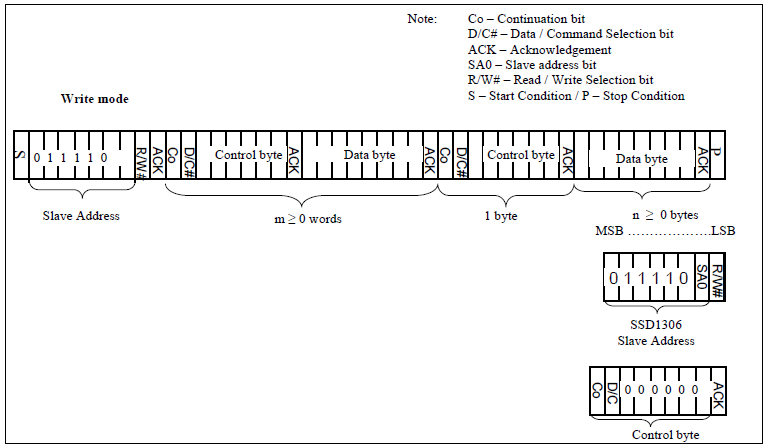In earlier tutorials, we discussed the interfacing of LCD and GLCD. In this tutorial, we will see how to interfaces an I2C OLED(128x64) with 8051. There are plenty of well written arduino oled libraries for displaying strings, numbers, and logos. They all use a shadow ram buffer of 1024 bytes(128x64 pixels) and support different fonts and graphics. As 8051 has only 128 bytes of RAM we cannot use the shadow RAM buffer and cannot support all the fonts and graphics.
First, we will see the frame format for sending the commands and data to OLED. After this, we will discuss few of the OLED commands. Finally, we will be displaying string, numbers on OLED.
Displaying of logos/icons will be discussed in the separate tutorial.
OLED Frame Format
The I2C communication interface consists of slave address bit SA0, I2C-bus data signal SDA and I2C-bus clock signal SCL. Both the data and clock signals must be connected to pull-up resistors.
- Slave address bit (SA0): SSD1306 has to recognize the slave address before transmitting or receiving any information by the I2C-bus. The device will respond to the slave address following by the slave address bit (“SA0” bit) and the read/write select bit (“R/W#” bit) with the following byte format,
| B7 | B6 | B5 | B4 | B3 | B2 | B1 | B0 |
|---|---|---|---|---|---|---|---|
| 0 | 1 | 1 | 1 | 1 | 0 | SA0 | R/W |
SA0 bit provides an extension bit for the slave address. Either “0111100” or “0111101”, can be selected as the slave address of SSD1306.
R/W bit is used to determine the operation mode of the I2C-bus interface.
R/W=1, it is in read mode.
R/W=0, it is in write mode.
- I2C-bus data signal (SDA): SDA acts as a communication channel between the transmitter and the receiver. The data and the acknowledgement are sent through the SDA.
- I2C-bus clock signal (SCL): The transmission of information in the I2C-bus is following a clock signal, SCL. Each transmission of data bit is taken place during a single clock period of SCL.

